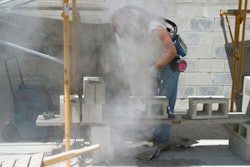
The Academy of Construction and Design is based within D.C.’s Cardozo Senior High School. It was established in 2006 by local builders who—can you believe it?—were facing a skilled worker shortage. A-CAD is open to students in all D.C.-area high schools and has more than 200 students enrolled.
About half of the students enrolled end up going into fields in construction, while the others follow a variety of paths. One alumnus is a filmmaker, another a nurse.
But A-CAD needs funding. The Greater Greater Education report says the program has only two teachers and was forced to turn away students this year because it lacks the funding to hire another.
So, A-CAD would have benefitted greatly from a chunk of the District’s $2.8 million in planning year funding as part of the Career Academies initiative. Nine other career academies were included, but A-CAD was not because “the careers it prepares students for aren’t among the ones the District has identified as priorities.”
D.C.’s Carrer Academies initiative is looking to train up students for “high-wage and high-demand.” And though there’s no denying that skilled construction workers fit both of those descriptions, the District’s list of priority careers only include two construction-related jobs: architect and building inspector.
The full Greater Greater Education post makes a great argument against D.C.’s exclusion of A-CAD, especially the point on whether or not the math and science classes high school training program can offer effectively put a student on a path to a career in a highly-specialized field such as psychiatry or medicine. Psychiatrists, surgeons and pediatricians are all on the D.C. priority list.
Don’t get us wrong, careers in medicine and technology are definitely high-wage and high-demand. But when funding is available for a high school training program, shouldn’t that money go toward programs that can not only prepare students for a particular field but do so on a fast track? Better science and math courses will definitely make a high school student’s transition to college easier, but there’s still at least 7 years of college and degree programs in between then and a career.
Meanwhile, there’s much a high-school program can do to set its students on a faster track to a field in construction. The opportunities for training and experience are everywhere. A-CAD students recently built a house in their neighborhood and helped out in the renovation of their high school.
Be sure to read the full piece over at Greater Greater Education.












